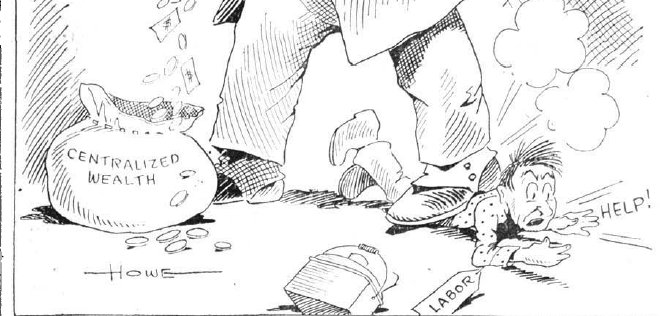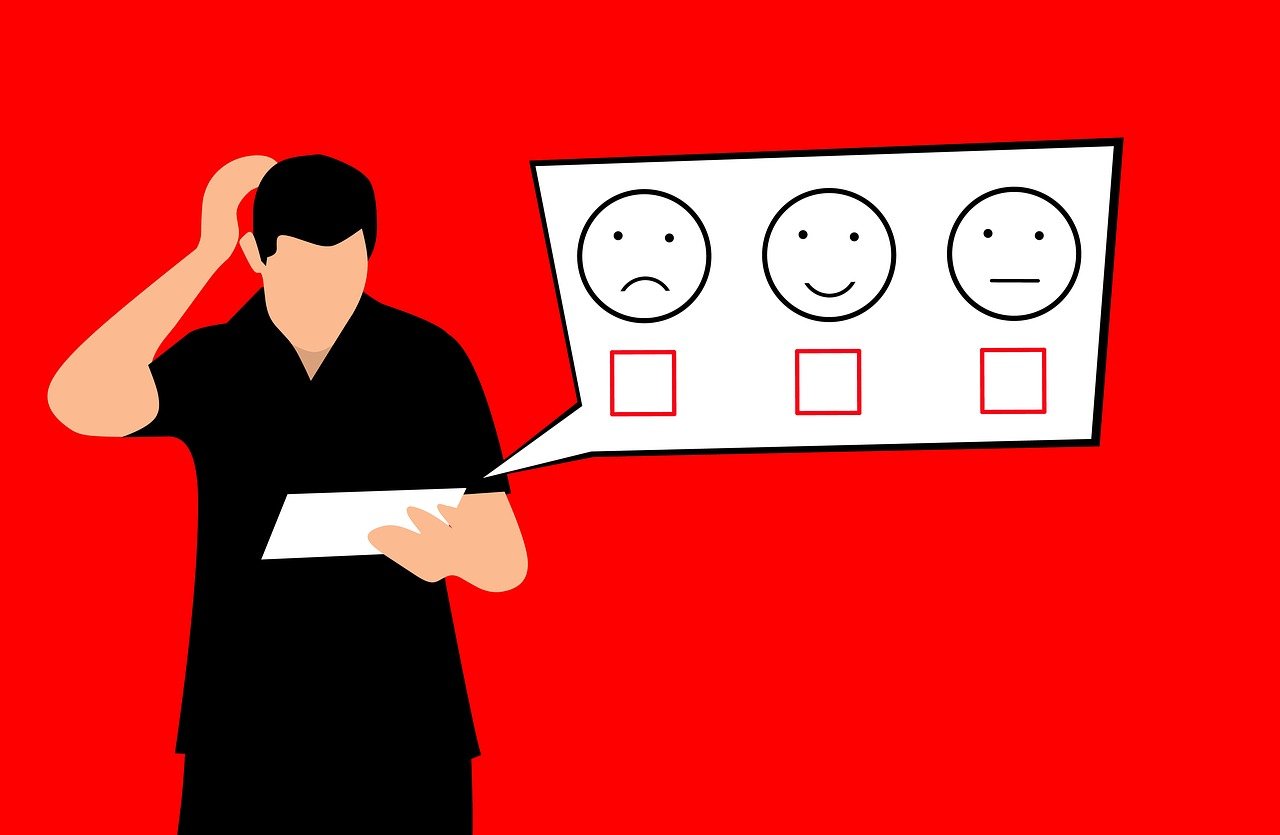Introduction
Social media has become an integral part of our daily lives, connecting people across the globe, facilitating information sharing, and shaping public discourse. However, the current centralized social media landscape has faced criticism for issues such as data privacy breaches, content censorship, and the influence of a few tech giants over the digital public square. Web3, the next generation of the internet, offers a radical alternative by introducing decentralized social networks that aim to redefine how we connect, share, and communicate online.
Social media, once a revolutionary force in the digital age, has become an integral thread in the fabric of modern society. It’s a conduit that brings together people from every corner of the globe, enabling the swift exchange of ideas, news, and culture. In doing so, it has irrevocably transformed how we connect with one another, access information, and engage in public discourse.
However, the very platforms that promised connectivity and democratized communication have come under intense scrutiny in recent years. The centralized nature of these social media giants has given rise to a host of critical issues. Data privacy breaches have rocked user trust, content censorship has raised concerns about free speech, and the overwhelming influence of a handful of tech behemoths over the digital public square has sparked debates about monopolistic power.
Enter Web3, a paradigm-shifting evolution of the internet. At its core, Web3 presents a revolutionary alternative to the current state of centralized social media. It introduces decentralized social networks that hold the potential to redefine the very essence of how we connect, share, and communicate in the digital realm.
Decentralized social networks, powered by blockchain technology and governed by decentralized autonomous organizations (DAOs), flip the script on the status quo. Here’s how:
Data Ownership and Privacy: In Web3, you, the user, are the master of your data. Personal information, posts, and interactions are stored on decentralized networks, not in the silos of tech giants. This user-centric model grants you complete control over who accesses your data and for what purpose, significantly bolstering data privacy.
Censorship Resistance: Decentralized social networks aim to break the chains of content censorship. Content moderation decisions are made collectively by the network’s participants, ensuring a more democratic approach to deciding what is acceptable and what is not. It’s a departure from the opaque moderation practices seen on centralized platforms.
Decentralized Governance: Web3 social networks are governed by DAOs, where users have a direct say in the platform’s rules and operations. This radically transparent governance model shifts power away from a centralized entity, making decisions more inclusive and reflective of the community’s values.
Interoperability: Web3 encourages interoperability among platforms. Users can bring their digital identities, reputation, and data with them as they move between various social networks, fostering healthy competition and reducing the network effects that benefit a few tech giants.
Monetization and Ownership: Unlike current platforms that profit from users’ data and attention, Web3 social networks explore innovative monetization models, such as microtransactions and decentralized advertising. Users can even share in the platform’s success through token-based incentives and ownership.
Yet, while Web3’s vision for decentralized social networks holds immense promise, it is not without its challenges. Usability, scalability, and regulatory hurdles must be navigated. Moreover, fostering widespread adoption and convincing users to transition from familiar platforms will require substantial effort.
In conclusion, the advent of Web3 is ushering in a transformative era for social media. Decentralized social networks offer a compelling vision of a digital world where data privacy is paramount, censorship is minimized, governance is inclusive, and users are in control of their online experiences. As we navigate this transition, one thing is clear: the future of social media is poised for a seismic shift, one that promises a more user-centric, democratic, and equitable online social landscape.
You can also read more about this here: Know Everything about Decentralized Social Networks
Centralized social media platforms, like Facebook, Twitter, and Instagram, have amassed enormous user bases and data repositories. While these platforms offer convenience and global reach, they also raise significant concerns:
Centralized social media platforms, exemplified by giants like Facebook, Twitter, and Instagram, have indeed become integral parts of our digital lives, offering unprecedented convenience, connectivity, and global reach. However, this immense growth and influence have brought to the forefront several pressing concerns that deserve careful consideration:
Data Privacy and Control: Centralized platforms often collect vast amounts of user data for targeted advertising and other purposes. This raises concerns about the privacy and security of personal information. Users may feel uncomfortable with the idea that their data is harvested and used without their full consent. The Cambridge Analytica scandal, for example, highlighted how data from millions of Facebook users was exploited for political purposes without their knowledge.
Content Moderation: Centralized platforms are responsible for moderating and policing the content shared by users. While this is necessary to curb harmful or illegal content, it also raises concerns about censorship and biased decision-making. Decisions about what content is allowed or removed can be influenced by subjective judgments, potentially infringing on free speech.
Algorithmic Echo Chambers: The algorithms used by centralized platforms often prioritize content that aligns with a user’s existing views and interests. This can create echo chambers where users are exposed primarily to information that reinforces their existing beliefs, limiting exposure to diverse perspectives and contributing to polarization and misinformation.
Centralized Power and Influence: These platforms have immense control over the digital public square, which raises concerns about their power to shape public discourse and influence elections and political opinions. Decisions made by a few individuals within these companies can have far-reaching consequences on what information is disseminated and who gets a voice.
Data Breaches and Security: Centralized repositories of user data make attractive targets for hackers and cybercriminals. Data breaches, which can expose sensitive personal information, are a recurring concern. Even well-established platforms like Twitter have experienced security breaches that compromise user accounts.
Vendor Lock-In: Users of centralized platforms are often locked into a specific ecosystem. Switching to an alternative platform can be challenging, as users may lose their data and connections. This vendor lock-in can hinder competition and innovation.
Misinformation and Fake News: The rapid spread of misinformation and fake news on centralized platforms is a significant concern. False information can go viral quickly, leading to real-world consequences. Platforms have had to implement fact-checking mechanisms to combat this issue.
Ad-Based Business Models: Most centralized platforms rely heavily on advertising revenue. This business model can incentivize engagement-driving features, sometimes at the expense of user well-being. The constant drive for user attention and engagement has been linked to issues like addiction and mental health concerns.
To address these concerns, alternative models and technologies, such as decentralized social networks, blockchain-based identity systems, and user-centric data control mechanisms, are being explored. These innovations aim to give users more control over their data and online experiences while fostering a more open and transparent digital environment. As the digital landscape continues to evolve, finding a balance between the convenience of centralized platforms and addressing these concerns will remain a significant challenge and opportunity for the future of social media.
If you’d like to dive deeper into this subject, there’s more to discover on this page: What is Lens Protocol, and how does it work?

Centralized platforms often collect vast amounts of user data for targeted advertising, leaving users vulnerable to privacy breaches and surveillance.
The accumulation of vast troves of user data on centralized platforms has indeed raised concerns about the potential for privacy breaches and extensive surveillance. Expanding on this idea:
Data Monetization: Centralized platforms frequently monetize user data through targeted advertising. While personalized ads can enhance user experiences, the extent of data collection and profiling can be disconcerting. Users may feel their every click, like, and comment is scrutinized to tailor ads, raising questions about the boundaries of personal data use.
Third-Party Data Sharing: Centralized platforms often share user data with third-party advertisers and analytics firms. This practice can lead to data leaks, where user information is inadvertently or intentionally shared beyond the platform’s control. Such incidents have highlighted the need for stricter data handling and sharing regulations.
Surveillance Concerns: The sheer volume of user data collected by centralized platforms creates an attractive target for potential cyberattacks and data breaches. Unauthorized access to this data can have severe consequences, including identity theft, financial fraud, and invasive surveillance by malicious actors.
Opaque Data Practices: Transparency regarding how user data is collected, processed, and shared on centralized platforms has been a longstanding issue. Users may not fully understand or consent to the extent of data collection, leading to a lack of trust and concerns about the abuse of data.
Regulatory Scrutiny: Governments and regulatory bodies worldwide have started scrutinizing data practices on centralized platforms. High-profile cases of data misuse and privacy violations have spurred calls for more robust data protection regulations, such as the European Union’s General Data Protection Regulation (GDPR).
User Empowerment: The rise of Web3 and decentralized technologies aims to empower users with control over their data. Decentralized social networks, for instance, prioritize user ownership and consent when it comes to data sharing, giving individuals the ability to dictate how their data is used and by whom.
In conclusion, the extensive collection of user data on centralized platforms has given rise to concerns related to privacy, surveillance, and data misuse. The ongoing debate surrounding data ethics, transparency, and regulation underscores the need for a more user-centric approach to data handling. As Web3 and decentralized alternatives gain traction, they offer a promising solution by putting user sovereignty and data control at the forefront, potentially reshaping the landscape of digital privacy and data security for the better.
You can also read more about this here: What does the future of decentralized social media mean for …

Content censorship and moderation policies have been a source of controversy, with concerns about bias, transparency, and the power of platforms to silence voices.
Content censorship and moderation policies, while intended to maintain a safe and respectful online environment, have indeed become a contentious issue in the digital age. As the debate rages on, it’s crucial to delve deeper into the various facets of this complex issue:
Bias and Fairness: One of the central concerns regarding content moderation is the potential for bias in decision-making. Moderation teams or algorithms may inadvertently favor certain viewpoints or demographics, leading to perceived or actual bias in content removal or promotion. Striking a balance between impartiality and context-aware moderation remains a significant challenge.
Transparency and Accountability: Transparency is paramount in content moderation. Many argue that platforms should be more transparent about their moderation processes, criteria for removal, and the handling of appeals. Transparency builds trust and allows users to understand how decisions are made.
Freedom of Expression: The power of platforms to silence voices has raised questions about freedom of expression. While content moderation is necessary to combat hate speech, misinformation, and harassment, concerns arise when it appears that legitimate voices are suppressed. Platforms must navigate the fine line between maintaining safety and stifling open discourse.
Algorithmic Moderation: The increasing reliance on AI and algorithms for content moderation introduces challenges related to accuracy and context. AI systems can struggle with nuanced content, potentially leading to false positives or false negatives. Continuous refinement of AI models and human oversight are critical.
Community Guidelines: Platforms’ community guidelines play a central role in content moderation. Ensuring that these guidelines are clear, comprehensive, and consistently enforced is vital. Users need to understand the rules to engage effectively.
Scale and Volume: Social media platforms handle vast amounts of content daily. Moderation teams face the daunting task of reviewing and acting on this content promptly. Scalable solutions, including AI and user reporting systems, are essential to managing this volume effectively.
Legal and Ethical Challenges: Platforms operate globally, making content moderation a complex legal and ethical challenge. Different countries have varying laws and cultural norms, necessitating a nuanced approach to compliance while upholding fundamental human rights.
User Empowerment: Some advocate for empowering users to have more control over their online experiences. This includes customizable content filters, the ability to report violations, and mechanisms for users to appeal moderation decisions.
Industry Collaboration: Collaboration among tech companies, policymakers, and civil society organizations is essential to develop industry-wide standards and best practices for content moderation. This can help reduce inconsistencies and improve accountability.
Evolving Solutions: Content moderation is an ever-evolving field. Solutions should adapt to emerging challenges, such as deepfakes, misinformation campaigns, and new forms of online harassment. Innovation in moderation technology is crucial.
In conclusion, the controversies surrounding content censorship and moderation underscore the need for a nuanced and evolving approach. Striking the right balance between protecting users from harm and upholding free expression is a complex task that requires ongoing collaboration, innovation, and a commitment to transparency and fairness. As online platforms continue to shape public discourse and communication, addressing these concerns becomes increasingly crucial for the future of digital spaces.
You can also read more about this here: How Blockchain and Web3 is impacting Social Media !

A handful of tech giants dominate the social media space, which can stifle competition, innovation, and user choice.
The concentration of power in the hands of a select few tech giants within the social media space has far-reaching implications that extend well beyond the boundaries of these companies. This oligopoly not only affects the dynamics of competition and innovation but also exerts a profound influence on the very fabric of our digital society.
Stifling Competition: The dominance of a few tech giants creates substantial barriers to entry for newcomers in the social media arena. These giants possess vast resources, unparalleled user bases, and an established network effect that makes it incredibly challenging for startups to compete on a level playing field. As a result, innovation is often stifled, as smaller, innovative players struggle to gain a foothold.
Innovation Deterrence: Oligopolies tend to prioritize maintaining the status quo rather than pushing the envelope of innovation. With limited competitive pressure, there is less incentive for tech giants to invest in groundbreaking features or technologies that could disrupt their own profitable models. Consequently, users may miss out on the benefits of cutting-edge advancements in social media.
Reduced User Choice: In an environment dominated by a handful of players, users are presented with limited choices. While each platform may offer a unique experience, the overall diversity and range of options are curtailed. This lack of choice can lead to a homogenization of user experiences and limit the ability to find platforms that align perfectly with individual preferences.
Data Privacy Concerns: With the power of extensive user data concentrated in the hands of a few companies, there are heightened concerns about data privacy and security. Data breaches or misuse on such a large scale can have significant consequences for users, and the limited number of alternatives may leave individuals with few viable options for safeguarding their data.
Content Monopolization: The control exerted by tech giants over the digital public square can lead to content monopolization. These companies have the ability to influence the visibility and reach of information, potentially impacting public discourse and the diversity of voices heard on their platforms.
Regulatory Scrutiny: Oligopolistic power in the tech industry has invited increased regulatory scrutiny. Governments and regulatory bodies are concerned about potential antitrust violations, market manipulation, and the impact on consumer welfare. This regulatory environment can have consequences for the tech giants’ operations and strategies.
Addressing these challenges necessitates a multifaceted approach. Antitrust actions, competition policies, and regulatory frameworks are some of the tools that governments and authorities may employ to ensure a more competitive landscape. Encouraging the development of decentralized alternatives and supporting innovative startups can foster competition and create a healthier ecosystem.
In conclusion, the concentration of power among a few tech giants in the social media sphere has wide-ranging implications for competition, innovation, and user choice. As we look to the future, it’s imperative to strike a balance that encourages a vibrant, competitive landscape while also addressing the concerns and challenges posed by these dominant players. The goal is to create an environment where users have meaningful choices, where innovation thrives, and where the digital public square truly reflects the diversity of voices in our global society.
Explore this link for a more extensive examination of the topic: Social Media: How Decentralized Social Networks Can Make a …

Users typically have limited control over their data, content, and the platform’s rules and algorithms.
The limited control that users often have over their data, content, and the inner workings of social media platforms is a significant aspect of the current digital landscape, raising several important considerations:
Data Ownership and Portability: Many users are unaware that the data they generate on social media platforms, from posts and photos to personal information, is often owned and controlled by the platform itself. This lack of data ownership can restrict users from easily moving their data to other platforms or exercising full control over how their data is used.
Algorithmic Black Boxes: The algorithms that determine what content users see on their feeds are highly complex and often proprietary. Users have little visibility into how these algorithms work and how they influence the content they encounter. This lack of transparency can lead to frustration, as users may not understand why certain content is promoted or why they are shown specific ads.
Content Removal and Moderation: Social media platforms play a pivotal role in moderating content to maintain community standards. However, this process is often opaque, and users have limited recourse when their content is removed or flagged. Striking a balance between freedom of expression and preventing harmful content is a challenging task, and users may feel powerless in disputes.
Privacy Settings Complexity: Privacy settings on social media platforms can be complex and confusing. Users may not be fully aware of who can access their information or how to adjust their settings to achieve the desired level of privacy. This lack of control can result in unintended data exposure.
Data Monetization: Users’ data is a valuable commodity for social media platforms, which often monetize it through targeted advertising. Users may not have a clear understanding of how their data is used for advertising purposes or how to opt out of data tracking.
Limited Customization: Users have limited customization options when it comes to the user interface and user experience on centralized platforms. They must adapt to the platform’s design choices and feature updates, even if these changes do not align with their preferences.
Content Ownership and Attribution: Users may not have full control over the ownership and attribution of their content. This is particularly relevant for content creators who may want to retain copyright or receive proper attribution for their work.
Lock-In Effect: Users often become locked into a specific platform’s ecosystem due to the network effects and the difficulty of migrating their data and connections elsewhere. This lock-in can limit user choice and hinder competition in the social media space.
Efforts are underway to address these concerns. Some alternative platforms and technologies are emerging that prioritize user control, data ownership, and transparency. Decentralized social networks, blockchain-based identity systems, and data-sharing protocols aim to empower users with greater control over their digital presence and interactions. Additionally, regulatory initiatives are being explored to enhance user rights and privacy protections in the digital realm.
As the digital landscape continues to evolve, finding ways to give users more control and agency over their data and online experiences will likely become a central theme in shaping the future of digital platforms and social media.
You can also read more about this here: What does the future of decentralized social media mean for …

Web3 envisions a decentralized internet where users regain control of their online experiences. Decentralized social networks are a key component of this vision, offering several benefits:
Web3’s vision of a decentralized internet is a profound departure from the centralized models that have dominated the online landscape for years. Within this visionary framework, decentralized social networks play a pivotal role, providing a range of compelling benefits that challenge the status quo:
1. User Empowerment: At the core of Web3’s ethos is user empowerment. Decentralized social networks prioritize the rights and agency of individuals. Users regain control over their online identities, data, and interactions, breaking free from the data-hungry grip of centralized platforms.
2. Data Ownership: In decentralized social networks, users own their data. This revolutionary concept means that personal information, posts, and interactions are stored on decentralized networks, not controlled by a single entity. Users decide when, how, and with whom their data is shared, putting an end to the exploitative data practices of centralized platforms.
3. Enhanced Privacy: Decentralized social networks leverage cryptographic techniques and blockchain technology to bolster user privacy. Data is encrypted, ensuring that only authorized parties can access it. Users can communicate and share content without fear of invasive surveillance or data breaches.
4. Censorship Resistance: Traditional social media platforms are subject to content censorship and removal based on opaque policies. Decentralized social networks, operating on decentralized blockchains, are inherently resistant to censorship. Content remains accessible as long as it complies with the network’s consensus rules, eliminating the risk of arbitrary content removal.
5. Transparent Governance: Many decentralized social networks implement governance models where users have a say in platform rules and policies. Through token-based voting and proposals, users collectively decide on platform upgrades, content moderation guidelines, and other crucial aspects. This transparency and user-driven governance foster a sense of ownership and accountability within the community.
6. Data Portability: Web3 promotes data portability, allowing users to seamlessly migrate their profiles and content across different decentralized social networks. This interoperability enhances user choice and competition among platforms, reducing the lock-in effect associated with centralized networks.
7. Monetization Opportunities: Decentralized social networks introduce innovative monetization models. Users can be rewarded for their contributions, whether through content creation, curation, or engagement, often in the form of cryptocurrency tokens. This shift empowers content creators and reduces the dependence on centralized advertising revenue models.
8. Global Collaboration: Decentralized social networks operate on a global scale, fostering collaboration and connection across borders. They provide a level playing field for individuals and communities worldwide, enabling cross-cultural dialogue and collaboration without intermediaries.
Challenges and Evolution: While decentralized social networks offer a promising alternative, they face challenges related to usability, scalability, and regulatory adaptation. Overcoming these hurdles will be essential for widespread adoption and to fulfill Web3’s vision of user-centric, decentralized online experiences.
In conclusion, decentralized social networks represent a fundamental shift in how we interact and communicate online. They are the embodiment of Web3’s principles of user empowerment, data ownership, and transparency. As these networks continue to evolve and address challenges, they hold the potential to reshape the digital landscape, fostering a more equitable, secure, and democratic online world.
To expand your knowledge on this subject, make sure to read on at this location: The potential of blockchain to power the future of decentralized …
In Web3, users own their data and have the power to decide how it is used. Personal information is stored securely on decentralized networks, reducing the risk of data breaches.
In the Web3 paradigm, the concept of user data ownership represents a fundamental shift in the way individuals interact with digital platforms and services. This transformation not only empowers users but also brings about a host of benefits and innovations:
Data Monetization: In Web3, users have the option to monetize their own data. They can choose to share specific data with trusted parties or marketplaces in exchange for compensation in the form of cryptocurrencies or tokens. This shift from data being exploited by corporations to data being an asset owned by individuals has the potential to reshape the digital economy.
Data Portability: Web3 enables seamless data portability across different applications and platforms. Users can easily migrate their data from one service to another without encountering the data lock-in that is prevalent in the centralized web. This promotes competition and fosters a user-centric digital ecosystem.
Privacy by Design: Web3 applications prioritize privacy by design. They utilize advanced cryptographic techniques to ensure that personal information remains confidential and can only be accessed with user consent. This approach minimizes the risk of data breaches and unauthorized access.
Decentralized Identity: Web3 introduces decentralized identity solutions, where users control their digital identities and personal information. This eliminates the need for centralized identity providers, reducing the risk of identity theft and data exposure.
User-Centric Services: With data ownership in the hands of users, digital services are incentivized to prioritize user satisfaction and privacy. This shift can lead to the creation of more user-centric applications and platforms that align with individual preferences and values.
Secure Data Storage: Data in Web3 is typically stored on decentralized networks, making it resistant to single points of failure and reducing the risk of large-scale data breaches. Data fragmentation across multiple nodes enhances security.
User Empowerment: Empowered users have the ability to control how their data is used, who has access to it, and for what purposes. This level of control not only enhances privacy but also fosters trust in digital interactions.
Trust in Ecosystems: Web3’s transparent and trustless nature, facilitated by blockchain technology, provides users with the confidence that their data is handled in a secure and accountable manner. This trust is a cornerstone of Web3 ecosystems.
Educational Opportunities: As users become more involved in managing their data and digital assets, educational initiatives and tools are emerging to help them navigate this new paradigm effectively. This education is vital for users to make informed choices about their data.
Regulatory Considerations: The shift in data ownership in Web3 has implications for data protection regulations and digital rights. Policymakers are actively exploring new frameworks to ensure that these rights are upheld and enforced in the decentralized web.
In summary, Web3’s emphasis on user data ownership represents a transformative shift that not only enhances individual privacy but also fosters a more equitable and user-centric digital ecosystem. By giving users control over their data, Web3 has the potential to empower individuals, drive innovation, and redefine the relationship between users and digital platforms in ways that were previously unimaginable in the centralized web. As the Web3 landscape continues to evolve, its principles of data ownership and privacy are poised to become integral to the future of the internet.
Looking for more insights? You’ll find them right here in our extended coverage: What does the future of decentralized social media mean for …

Decentralized social networks rely on blockchain technology, which makes censorship difficult. Content is distributed across a decentralized network of nodes, ensuring that no central authority can control or remove it arbitrarily.
Decentralized social networks, empowered by blockchain technology, have ushered in a new era of digital communication and information sharing. They revolutionize the way we connect, collaborate, and exchange ideas online by addressing some of the most pressing issues in contemporary social media.
True User Empowerment: In traditional centralized social networks, user data and content are often exploited for profit or manipulated by the platform’s owners. However, in decentralized networks, users have greater control over their data and can even monetize it directly. Blockchain technology enables microtransactions and cryptocurrency incentives, allowing content creators to receive fair compensation for their contributions without relying on advertising revenue.
Enhanced Privacy: Decentralized social networks prioritize user privacy. They use cryptographic techniques to protect user identities and content. Instead of sharing personal data with a central entity, users maintain ownership of their data while enjoying the benefits of online interaction. This shift towards enhanced privacy fosters a more secure and trust-based online environment.
Content Moderation & Transparency: Contrary to the misconception that decentralized networks are lawless, they often incorporate innovative content moderation mechanisms. Community-driven moderation or decentralized autonomous organizations (DAOs) can be established to decide on content guidelines. This approach ensures that content removal decisions are made collectively and transparently, reducing the risk of arbitrary censorship.
Global Accessibility: Centralized social networks are often restricted in certain regions due to government censorship or other geopolitical factors. Decentralized networks, on the other hand, are inherently resistant to such censorship attempts. Users from around the world can access and participate in these networks, promoting cross-cultural dialogue and the free exchange of ideas.
Reduced Fake News and Misinformation: The transparency and immutability of blockchain technology make it easier to trace the origin of information shared on decentralized social networks. This reduces the spread of fake news and misinformation, as users can verify the authenticity of content and its source, leading to a more informed and discerning online community.
Resilience to DDoS Attacks: Decentralized networks are less susceptible to distributed denial-of-service (DDoS) attacks compared to centralized counterparts. Content is distributed across a multitude of nodes, making it challenging for malicious actors to take down the entire network. This resilience ensures the continuity of communication and information sharing even during adverse circumstances.
Empowering Niche Communities: Decentralized social networks facilitate the creation of niche communities where like-minded individuals can gather without the interference of central authorities. This empowerment of diverse communities fosters inclusivity and innovation by allowing unique perspectives to flourish.
Innovation and Competition: The open nature of decentralized networks encourages innovation. Anyone can create their own decentralized social platform or build applications on top of existing ones. This promotes healthy competition, driving continuous improvement and innovation in social networking features and services.
In summary, decentralized social networks, underpinned by blockchain technology, offer a promising alternative to the centralized models dominating the current digital landscape. They empower users, protect privacy, enhance content moderation, and promote global accessibility, ultimately reshaping the way we connect and share information online. These networks represent a step towards a more democratic and resilient digital future.
Additionally, you can find further information on this topic by visiting this page: Decentralized Social Networks: What You Need to Know.

Web3 social networks prioritize user ownership and control. Users have the final say in content moderation and platform governance through decentralized decision-making mechanisms.
Web3 social networks represent a profound departure from the traditional centralized model, where platform owners wielded significant control over content, governance, and community guidelines. In these decentralized networks, user ownership and control are not just principles but core features that empower users to shape the platform according to their preferences and values.
User-Driven Content Moderation: In Web3 social networks, content moderation is often decentralized and community-driven. Instead of relying on a central authority to make decisions about what content is permissible, users collectively participate in the moderation process. This can involve flagging content, proposing guidelines, and voting on the removal or approval of specific posts or users. This approach promotes transparency and prevents undue censorship while allowing the community to decide what constitutes acceptable content.
Decentralized Governance: Governance in Web3 social networks is typically achieved through decentralized autonomous organizations (DAOs) or similar mechanisms. Users hold governance tokens or voting power that enables them to influence platform decisions. This includes everything from protocol upgrades to rule changes and fee structures. Decentralized governance ensures that no single entity holds disproportionate power, aligning with the principles of decentralization and user control.
Data Ownership and Portability: Web3 social networks prioritize data ownership and portability. Users have granular control over their personal data and can choose whether to share it, how it’s used, and whether to monetize it. This shift from the platform owning user data to users owning their data is a significant departure from the data practices of centralized platforms.
Interoperability and Open Standards: Many Web3 social networks are designed to be interoperable with other platforms and technologies. This openness allows users to seamlessly interact with different decentralized networks and applications, promoting choice and reducing vendor lock-in. Open standards and protocols play a crucial role in achieving this interoperability.
Monetization and Incentives: Web3 social networks often introduce innovative monetization models. Users may receive rewards or tokens for contributing to the network, whether through content creation, moderation, or governance participation. This aligns incentives with the growth and sustainability of the platform and provides users with a direct stake in its success.
Transparency and Auditability: Transparency is a hallmark of Web3 social networks. All platform decisions, including those related to governance, content moderation, and protocol changes, are recorded on a public blockchain or ledger. This transparency ensures that users can audit platform activities and verify that decisions align with community interests.
Community-Led Development: Web3 social networks often involve the community in the development process. Users can propose improvements or features and even participate in the development itself. This collaborative approach ensures that the platform evolves in response to user needs and feedback.
While Web3 social networks offer a promising vision of user ownership and control, they are not without challenges. Achieving decentralized decision-making at scale, preventing abuse and malicious activity, and ensuring scalability and usability are ongoing considerations. Additionally, navigating the balance between individual freedoms and the need to maintain community guidelines and standards remains a complex challenge.
In conclusion, Web3 social networks prioritize user ownership and control, ushering in a new era where users actively shape content moderation, governance, and the platform’s direction. These networks reflect a shift toward user-centric and community-driven digital spaces, emphasizing transparency, data ownership, and collective decision-making. As Web3 social networks continue to evolve, they hold the potential to redefine how we interact and connect online while empowering users in unprecedented ways.
To delve further into this matter, we encourage you to check out the additional resources provided here: NEAR Foundation and Blumer: Pioneering Web3 Social Networking …

Web3 aims to foster interoperability between different social networks and platforms, allowing users to have a seamless experience across a variety of decentralized services.
The concept of interoperability within Web3 is a game-changer that promises to reshape the digital landscape in profound ways. It goes beyond just seamless experiences and encompasses a wide range of transformative aspects:
1. Enhanced User Experience: Web3’s commitment to interoperability ensures that users can move effortlessly between different social networks and platforms. This means that individuals no longer need to create multiple accounts, manage various profiles, or adapt to different user interfaces. Instead, they can enjoy a unified experience that simplifies their online interactions.
2. Cross-Platform Compatibility: Interoperability fosters cross-platform compatibility, allowing users to access decentralized services using a variety of devices and applications. Whether you prefer a mobile app, a web browser, or a specialized tool, you can access the same Web3 services without friction.
3. Data Portability: In a Web3 world, data portability is a fundamental right. Users can take their profiles, preferences, and data with them as they move across different services. This means that if you decide to switch from one decentralized social network to another, you can seamlessly carry your digital identity and history along.
4. Decentralized Identities: Interoperability is closely tied to decentralized identity solutions. These systems allow users to have a single, self-sovereign digital identity that can be recognized and trusted across various platforms. Your decentralized identity serves as your key to unlock access to different Web3 services, streamlining the login and registration processes.
5. Expanding Use Cases: Interoperability extends beyond social networks. It encompasses a wide range of use cases, including DeFi (Decentralized Finance), NFT (Non-Fungible Token) marketplaces, DApps (Decentralized Applications), and more. Users can seamlessly participate in these diverse ecosystems without needing separate accounts or wallets for each.
6. Cross-Network Collaboration: The ability to interact and collaborate across different networks and platforms encourages cross-pollination of ideas and innovations. Developers, creators, and communities can leverage the strengths of various decentralized services to create new, hybrid experiences that offer unique value.
7. Reduced Fragmentation: Interoperability mitigates the risk of fragmentation within the Web3 ecosystem. It ensures that users and developers are not locked into specific networks or services, fostering competition and innovation while preventing monopolies.
8. Community Empowerment: Decentralized social networks and platforms often feature community-driven governance. Through interoperability, communities can influence the development and direction of the services they use, promoting inclusivity and decentralization.
Challenges and Standardization: Achieving seamless interoperability in Web3 is not without its challenges. Developing and implementing interoperability standards is crucial. Ensuring the security of cross-network interactions and addressing issues related to scalability are ongoing efforts within the Web3 community.
In summary, Web3’s commitment to interoperability is poised to revolutionize how we engage with digital services. It promises a future where users have greater control, flexibility, and agency over their online experiences. As Web3 technologies mature and interoperability becomes more pervasive, the digital landscape is set to become more open, user-centric, and inclusive, ushering in a new era of digital freedom and choice.
Don’t stop here; you can continue your exploration by following this link for more details: ActivityPub is the next big thing in social networks – The Verge

While the promise of decentralized social networks is exciting, they face several challenges:
Indeed, the prospect of decentralized social networks holds tremendous promise for reshaping the digital landscape and addressing some of the limitations of centralized platforms. However, these emerging decentralized networks also confront a range of challenges that must be addressed for widespread adoption and success:
Usability and Accessibility: Many decentralized social networks are in the early stages of development and may lack the user-friendly interfaces and features that people have come to expect from mainstream platforms. Improving usability and accessibility will be crucial to attract a broader user base.
Scalability: Decentralized networks face scalability challenges, particularly when they rely on blockchain technology. As the user base grows, issues like slow transaction times and high fees can hinder the network’s performance. Layer-2 solutions and alternative consensus mechanisms are being explored to address this.
Interoperability: Ensuring that decentralized social networks can seamlessly interact with each other and with existing platforms is essential. Achieving interoperability allows users to maintain connections and content across different networks and fosters a more inclusive ecosystem.
Content Moderation: Content moderation in decentralized networks is a complex issue. Striking a balance between promoting free speech and preventing harmful or illegal content is challenging. Innovations in decentralized moderation systems and community-driven approaches are being explored.
Identity and Reputation Systems: Decentralized social networks often grapple with identity and reputation systems. Ensuring that users can maintain trusted and consistent digital identities across different networks is a significant challenge.
Privacy and Security: While decentralization can enhance privacy, it also introduces new security challenges. Users must have robust tools to protect their data and digital assets. Ensuring that private information remains confidential and secure is paramount.
Network Governance: Decentralized networks typically rely on governance mechanisms that involve token holders or validators. Ensuring that governance is transparent, equitable, and resistant to capture by a small group of participants is essential for maintaining trust in the network.
Monetization Models: Traditional centralized platforms often rely on advertising for revenue. Decentralized networks need to explore sustainable and equitable monetization models that align with user interests and values.
Regulatory Compliance: Decentralized social networks must navigate a complex regulatory landscape, which varies from country to country. Compliance with data protection, copyright, and other regulations while maintaining decentralization is a delicate balance.
User Onboarding: Onboarding new users to decentralized networks can be challenging. Many people are unfamiliar with blockchain technology and the concepts of digital wallets and cryptographic keys. Simplifying this process is crucial for broader adoption.
Education and Awareness: Raising awareness and educating users about the benefits and risks of decentralized social networks is essential. Users need to understand the differences between decentralized and centralized platforms to make informed choices.
Network Effects: Established centralized social networks benefit from network effects, where the value of the platform increases as more users join. Decentralized networks must overcome this hurdle to attract a critical mass of users and content creators.
In conclusion, while the potential of decentralized social networks to foster a more open, user-centric, and censorship-resistant digital ecosystem is exciting, they face a myriad of challenges on the path to widespread adoption. Addressing these challenges will require collaboration among developers, users, regulators, and other stakeholders to create a decentralized web that is both functional and accessible to all. As the technology matures and user awareness grows, decentralized social networks have the potential to reshape the way we connect and interact online.
For a comprehensive look at this subject, we invite you to read more on this dedicated page: Decentralized Social Media: The Future of Connections or an …

Web3 technologies can be complex, and user-friendly interfaces are essential for widespread adoption.
Web3 technologies hold immense potential to reshape the digital landscape by enabling decentralized applications, blockchain-based ecosystems, and user-controlled data. However, their complexity poses a significant barrier to mainstream adoption. To unlock the full potential of Web3, user-friendly interfaces are not just desirable; they are absolutely essential. Here’s an extended exploration of this idea:
Simplifying Cryptocurrency Management: One of the primary components of Web3 is cryptocurrency, which can be bewildering for newcomers. User-friendly interfaces must simplify tasks like wallet creation, key management, and transactions. Intuitive designs and straightforward language can help users navigate this new financial landscape with confidence.
Enhancing Decentralized App (DApp) Accessibility: DApps often have intricate interfaces that resemble traditional applications. Streamlining these interfaces by prioritizing usability and design can make it easier for users to interact with blockchain-powered applications. By hiding the underlying complexities, users can seamlessly access services like decentralized finance (DeFi), non-fungible tokens (NFTs), and more.
Clearing the Jargon: Web3 introduces a plethora of new terminologies and concepts, such as smart contracts, gas fees, and consensus algorithms. User-friendly interfaces should provide clear explanations and tooltips to educate users as they navigate the Web3 ecosystem. The aim is to make the technology accessible to individuals regardless of their technical background.
Managing Digital Identities: Web3 often requires users to manage their digital identities and private keys securely. User-friendly interfaces can simplify this process by offering password recovery mechanisms, biometric authentication, or even hardware wallet integrations. This enhances the security and accessibility of decentralized services.
Reducing Gas Fee Confusion: Cryptocurrency transactions on Web3 networks come with gas fees, which can vary significantly based on network congestion. User-friendly interfaces should offer real-time fee estimates and recommendations, allowing users to make informed decisions when sending transactions.
Cross-Platform Compatibility: To encourage adoption, Web3 interfaces should be accessible across various devices and platforms. Whether users are on desktop, mobile, or web, the experience should remain consistent and user-friendly.
Gamifying Learning: Gamification elements in Web3 interfaces can incentivize users to explore and understand the technology better. Educational games, interactive tutorials, and rewards for completing tasks can make the learning process engaging and enjoyable.
Community Support: Building a user-friendly Web3 ecosystem requires collaboration between developers, designers, and the broader community. Crowdsourced efforts to identify pain points in user interfaces and propose improvements can lead to continuous enhancement and innovation.
Compliance and Regulation: As Web3 technologies become more mainstream, they must comply with regulatory requirements. User-friendly interfaces can integrate compliance checks and provide clear information about legal obligations, ensuring users can navigate the space with confidence.
Feedback Loops: User-friendly interfaces should include mechanisms for users to provide feedback and report issues. This user input is invaluable for iterative improvements, helping developers refine their products and enhance the overall Web3 experience.
In conclusion, the success of Web3 technologies hinges on their accessibility to a broad range of users, not just the tech-savvy. User-friendly interfaces play a pivotal role in making the complexities of blockchain, cryptocurrencies, and decentralized applications approachable. By prioritizing usability, education, and user support, Web3 can transition from being a niche technology to a transformative force in the digital world, benefiting individuals and industries alike.
For additional details, consider exploring the related content available here Web3 and Social Networks: Decentralization with Evan Henshaw …

As decentralized networks grow, ensuring scalability and performance becomes crucial to compete with centralized platforms.
As decentralized networks continue to gain momentum and attract a growing user base, the imperative to ensure scalability and optimal performance becomes increasingly apparent. This necessity arises from the inherent differences between decentralized and centralized platforms, as well as the challenges posed by the unique characteristics of decentralized systems.
User Expectations: Users of decentralized networks have come to expect the same level of performance and responsiveness as they experience on centralized platforms. Whether it’s loading times, transaction processing, or content delivery, users demand a seamless and swift experience. Failing to meet these expectations could deter adoption and hinder the growth of decentralized platforms.
Scaling Solutions: Scalability is an ongoing concern for decentralized networks, particularly those built on blockchain technology. Traditional blockchains like Bitcoin and Ethereum have faced scalability challenges, with limitations on transaction throughput and confirmation times. Layer 2 solutions, sidechains, and sharding are some of the innovations being explored to address these issues and increase the capacity of decentralized networks.
Network Congestion: During periods of high demand or network congestion, the performance of decentralized networks can suffer. Transaction fees may spike, and confirmation times may lengthen, leading to a less-than-ideal user experience. Implementing efficient congestion management mechanisms and optimizing network resources are essential to mitigate these issues.
Resource-Intensive Operations: Decentralized platforms often require users to run network nodes or participate in consensus mechanisms. These operations can be resource-intensive and may limit the ability of users with limited computing resources to participate fully. Designing decentralized systems that are efficient and lightweight is crucial for broad accessibility.
Interoperability: As decentralized networks grow, interoperability between different chains and protocols becomes vital. Users should be able to seamlessly interact with various decentralized applications and networks, regardless of the underlying technology. Standards and protocols that enable this interoperability are crucial to a thriving decentralized ecosystem.
Content Delivery: Decentralized networks need to address the efficient delivery of content, especially for media-rich applications. Decentralized file storage and content delivery networks (CDNs) are being developed to ensure that content can be retrieved quickly and reliably from distributed sources.
Incentive Mechanisms: Scalability often depends on the incentives that encourage users to participate in the network. Token-based incentive structures, staking, and rewards are common approaches to attract and retain participants. Ensuring these mechanisms are well-designed and economically sustainable is essential for scalability.
Security and Consensus: As networks scale, maintaining security and consensus becomes increasingly challenging. Decentralized networks must strike a balance between performance and security to prevent attacks, collusion, and centralization pressures.
User Education: Educating users about the trade-offs between scalability and decentralization is crucial. Users need to understand that while decentralized networks prioritize security and control, there may be some compromises in terms of speed and efficiency.
In conclusion, the scalability and performance of decentralized networks are paramount to their competitiveness and long-term viability. Striking the right balance between decentralization, security, and performance is a complex but necessary challenge. As the decentralized ecosystem continues to evolve, it will be marked by ongoing innovations, collaborations, and technical advancements aimed at delivering the best possible user experience while maintaining the principles of decentralization and user control.
You can also read more about this here: What does the future of decentralized social media mean for …

Governments and regulators are still grappling with how to apply existing laws to Web3 technologies, which may pose legal challenges.
The emergence of Web3 technologies has presented governments and regulators with a complex and evolving landscape that challenges traditional legal frameworks. This situation carries several implications and considerations:
1. Legal Ambiguity: Web3 technologies, including blockchain, smart contracts, and decentralized applications, often operate across borders and outside the jurisdictional boundaries of traditional legal systems. This global and decentralized nature creates ambiguity regarding which laws should apply and how they should be enforced.
2. Regulatory Gaps: Many existing laws and regulations were designed for centralized systems and intermediaries, not decentralized and trustless technologies. As a result, there are regulatory gaps that fail to address the unique aspects of Web3, such as smart contracts, decentralized autonomous organizations (DAOs), and decentralized finance (DeFi).
3. Enforcement Challenges: Enforcing regulations within the Web3 space is challenging due to the pseudonymous and decentralized nature of transactions. Identifying parties involved in illegal activities or ensuring compliance becomes more complex, raising concerns about law enforcement effectiveness.
4. Data Privacy: Web3’s commitment to data privacy and user sovereignty often conflicts with data-sharing and surveillance regulations. Governments are grappling with how to balance the need for data privacy with law enforcement and national security concerns.
5. Tokenization and Securities Laws: The tokenization of assets, such as real estate or artwork, using blockchain technology blurs the line between traditional securities and utility tokens. Regulators are working to classify and regulate these assets appropriately.
6. Cross-Border Transactions: Cross-border transactions facilitated by Web3 technologies challenge the application of national laws. Regulators must coordinate efforts and establish international standards to address cross-border issues effectively.
7. Innovation vs. Risk Mitigation: Balancing the promotion of technological innovation with the need to mitigate risks, such as fraud and financial instability, is a delicate task. Regulators must strike a balance between fostering innovation and protecting consumers and investors.
8. Industry Collaboration: Collaboration between governments, regulatory bodies, industry stakeholders, and the Web3 community is essential for developing coherent and effective regulatory frameworks. Industry self-regulation and best practices can complement government efforts.
9. Education and Awareness: There is a need for education and awareness-building efforts to help regulators and legal professionals understand the intricacies of Web3 technologies. Training programs, workshops, and knowledge-sharing initiatives can bridge the knowledge gap.
10. Adaptive Regulations: The pace of technological advancement in the Web3 space demands regulatory agility. Regulatory frameworks must evolve alongside technology to remain relevant and effective. Regulatory sandboxes and pilot programs can provide space for experimentation and adaptation.
In conclusion, governments and regulators face significant challenges in adapting existing legal frameworks to Web3 technologies. The decentralized, global, and innovative nature of Web3 requires a reevaluation of traditional approaches to regulation. As regulators work to strike a balance between fostering innovation and ensuring compliance, collaborative efforts with industry stakeholders and ongoing education will be critical to the development of effective and forward-thinking regulatory frameworks for the Web3 era.
Should you desire more in-depth information, it’s available for your perusal on this page: The Future of Social Media: Exploring Examples of Web3 Social …

Established centralized social media platforms have strong network effects. Convincing users to transition to decentralized alternatives may require innovative approaches.
Transitioning users from well-established centralized social media platforms to decentralized alternatives presents a considerable challenge but also opens the door to innovation in several key areas:
Incentive Mechanisms: Decentralized social networks can introduce novel incentive mechanisms to attract and retain users. For example, users might earn tokens or rewards for creating valuable content or participating in the network. These incentives can be a powerful motivator for users to make the switch.
Token-Based Rewards: Some decentralized networks offer token-based rewards for engagement and content creation. These tokens can have real value, providing users with a tangible reason to join and contribute to the decentralized platform.
Data Ownership: Emphasizing data ownership and privacy is a compelling selling point for decentralized platforms. Users can be educated about the benefits of having control over their data and how decentralized networks prioritize data security.
Content Portability: Building tools and standards that allow users to seamlessly import their data and connections from centralized platforms to decentralized ones can ease the transition. This ensures that users do not lose their existing digital footprint.
Interoperability: Enabling interoperability between decentralized and centralized platforms allows users to gradually explore the decentralized ecosystem without abandoning their established online presence. This gradual transition can reduce the perceived risk.
User-Friendly Interfaces: Improving the user experience of decentralized platforms is critical. Platforms must strive for user-friendly interfaces that are as intuitive and feature-rich as their centralized counterparts. Familiarity in design can lower the barrier to entry.
Education and Awareness: Initiatives to educate users about the benefits of decentralization, such as enhanced privacy, data ownership, and censorship resistance, are essential. Awareness campaigns can highlight the shortcomings of centralized platforms, fostering a desire for alternatives.
Content Discovery: Developing effective content discovery and recommendation algorithms can help users find valuable content on decentralized platforms. This ensures that users do not miss out on engaging and relevant content during the transition.
Community Building: Encouraging the formation of vibrant communities on decentralized platforms can be a powerful driver for user adoption. Communities provide a sense of belonging and shared interests that can attract users away from centralized platforms.
Deplatforming Concerns: Concerns about deplatforming or censorship on centralized platforms can motivate users to explore decentralized alternatives. Highlighting instances of content removal or account suspension on centralized platforms can draw attention to the importance of censorship-resistant alternatives.
Partnerships and Integration: Collaborating with established brands, influencers, and content creators can help decentralized platforms gain visibility and credibility. Integration with existing social media accounts and tools can also facilitate the transition.
Regulatory Alignment: Ensuring that decentralized platforms comply with relevant regulations can reduce barriers to entry. Regulatory clarity can foster confidence among users and businesses alike.
Trial Periods: Some decentralized platforms offer trial periods or limited-time promotions, allowing users to explore the platform’s features without a long-term commitment. This reduces the perceived risk of making the switch.
In summary, the transition of users from centralized to decentralized social media platforms requires a combination of innovative strategies, incentives, education, and user-friendly experiences. As decentralized platforms continue to mature and offer unique advantages, they have the potential to become viable alternatives to centralized giants, provided that they can effectively address users’ concerns and provide a compelling value proposition.
To expand your knowledge on this subject, make sure to read on at this location: Twitter Fiasco Reveals Why Web3 Social Media Platforms Are the …

Web3 and decentralized social networks represent a paradigm shift in the world of social media. While challenges exist, the potential for enhanced privacy, censorship resistance, and user empowerment make them an appealing alternative to centralized platforms. As Web3 continues to evolve, we can expect decentralized social networks to play a significant role in shaping the future of how we connect and interact online, offering a more democratic, user-centric, and secure digital space for all.
Web3 and decentralized social networks are indeed at the forefront of a paradigm shift in the realm of social media, ushering in a new era of online interaction and communication. As we look ahead, it becomes increasingly evident that these platforms hold the potential to transform the digital landscape in profound ways. Here, we explore and extend the idea of their impact and future evolution:
The Resilience of Decentralization: Centralized social media platforms have been marred by incidents of data breaches and security vulnerabilities. In contrast, decentralized social networks are designed to be more secure through cryptography and distributed data storage. As they continue to evolve, they may become a bulwark against cyber threats, ensuring the privacy and data integrity of users.
Web3’s Interoperability: Web3 technologies enable interoperability, allowing users to seamlessly access and interact with content and services across various decentralized platforms. This interoperability can foster a rich and interconnected digital ecosystem where users can choose the platforms and services that best align with their preferences and values.
Blockchain-Based Reputation Systems: Trust and reputation are critical in online interactions. Decentralized social networks can leverage blockchain technology to establish transparent reputation systems. Users can build and carry their reputation across platforms, enhancing trust in a decentralized digital landscape.
User-Centric Monetization: Traditional social media platforms predominantly monetize user data and attention. In contrast, Web3 and decentralized networks introduce new monetization models. Users can directly benefit from their contributions through token rewards, tipping, or participation in decentralized autonomous organizations (DAOs). This shift empowers content creators and participants economically.
Community-Driven Governance: Decentralized networks often adopt community-driven governance models, where users have a direct say in the platform’s rules and policies. This participatory approach ensures that decisions are made collectively, reducing the risk of arbitrary censorship or changes in platform direction.
NFTs and Digital Ownership: Non-fungible tokens (NFTs) have gained prominence in the Web3 space, allowing users to assert ownership over digital content and creations. Decentralized social networks can integrate NFTs, enabling users to monetize and trade their digital assets, from art to virtual real estate.
Global Outreach and Inclusivity: Decentralized networks transcend geographical boundaries and political constraints. They provide an inclusive space for global dialogue and collaboration. In the future, they may become a catalyst for cross-cultural exchanges and the sharing of diverse perspectives.
Learning and Education: Web3 technologies can empower individuals to take control of their digital lives. As users become more adept at managing their digital identities, wallets, and assets, they may also become more conscious consumers of online content and services. This educational aspect of Web3 can lead to a more informed and discerning online community.
Sustainability and Energy Efficiency: With concerns about the environmental impact of blockchain networks, future developments in Web3 may focus on enhancing energy efficiency and adopting eco-friendly consensus mechanisms. This sustainability aspect is critical for the long-term viability of decentralized networks.
In conclusion, Web3 and decentralized social networks are not merely alternatives to centralized platforms; they represent a fundamental shift in the way we conceive and interact with the digital world. While challenges exist, such as scalability, energy consumption, and user onboarding, their potential to offer enhanced privacy, censorship resistance, and user empowerment makes them a compelling force in shaping the future of online communication. As these technologies mature and adapt to user needs, they are poised to create a more democratic, user-centric, and secure digital space for individuals worldwide.
Additionally, you can find further information on this topic by visiting this page: What does the future of decentralized social media mean for …

More links
Should you desire more in-depth information, it’s available for your perusal on this page: What are decentralized social networks?
